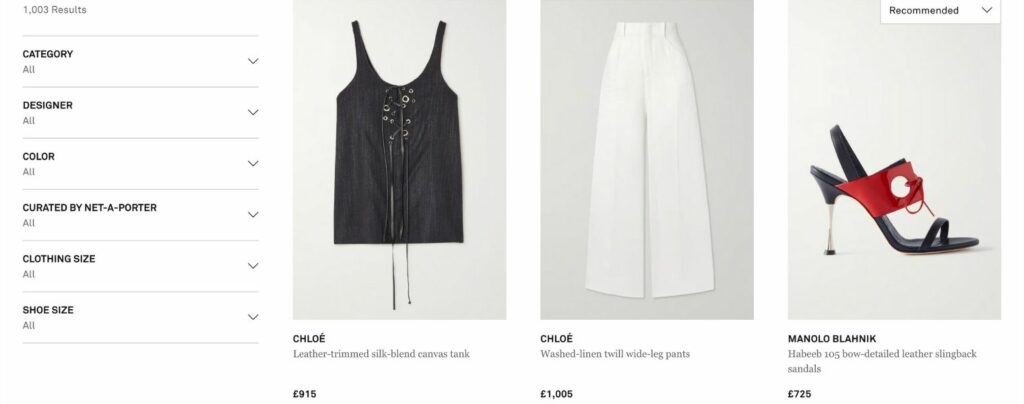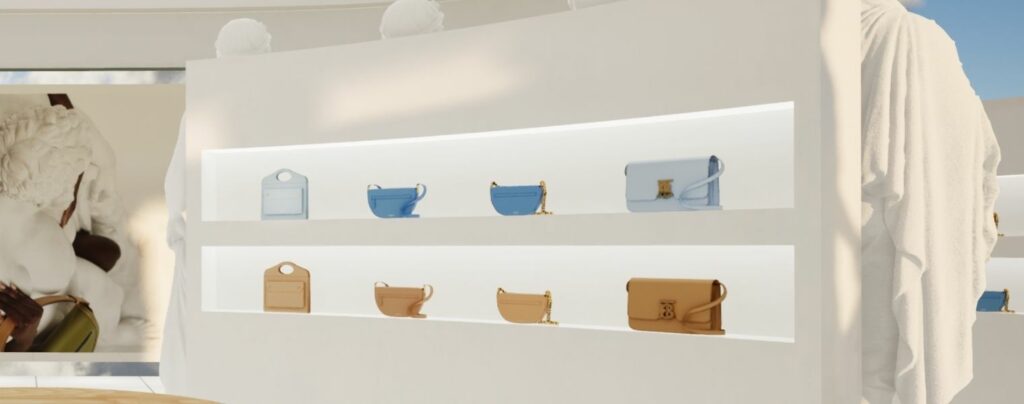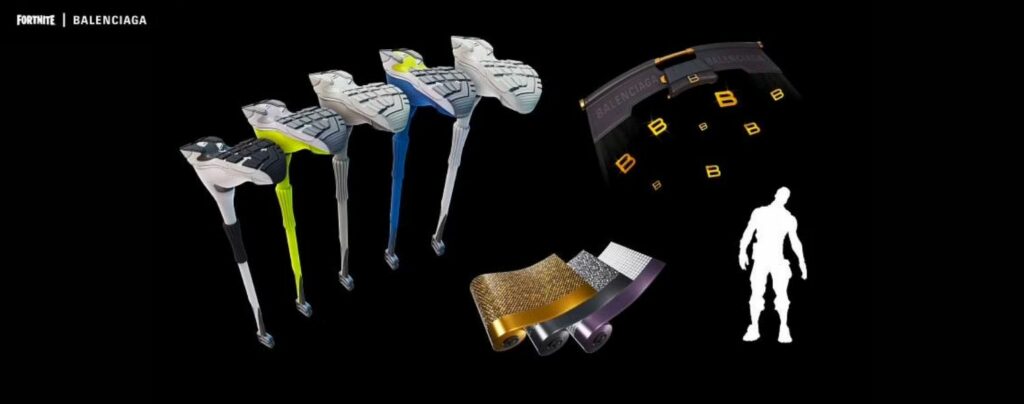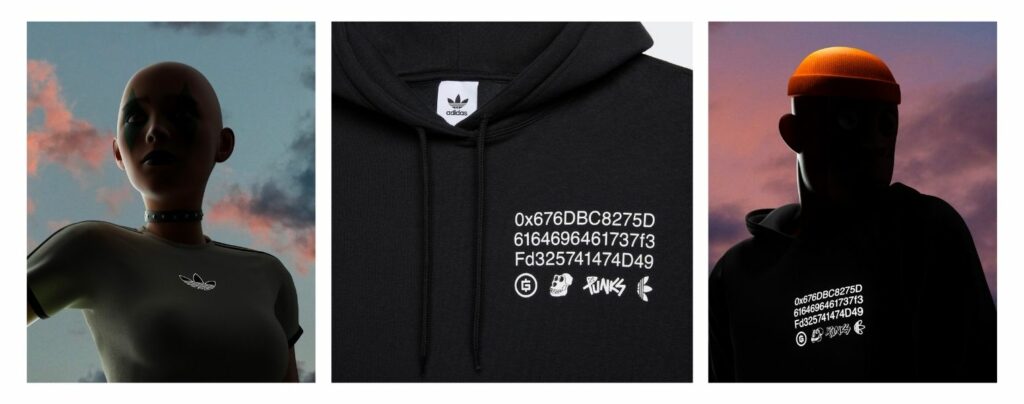We use cookies to improve your experience. By continuing to use this website you agree to our cookie policy.
Since announcing Facebook’s official name change into ‘Meta’ a few months ago, the concept of merging virtual and physical worlds has become the new norm for retailers within the Metaverse. Mixing shared experiences and new digital connections are all in the realm of possibility.
Although straightforward to some, many find the definition of the Metaverse ambiguous. Emperia recently published its industry insights, sharing all you need to know about what it means to be in a Metaverse here.
If you’re all set, then we can look into whether or not the future of retail depends on the Metaverse, and just how urgent it is within luxury brands today.
The Shopping Benefit in the Metaverse
Physical and virtual worlds merging has brought a lot of hope to retailers, as the idea of making products accessible to online shoppers means a new revenue channel for retailers. What started with the likes of Amazon and eBay out of a real need for convenience, has now become a new means to reach new consumers in a way that truly tells a brand story.
But online shopping has largely remained a bland, repetitive and monotonous experience throughout the years. Lacking emotional connectivity unique brand identifying characteristics, e-commerce websites left a lot to be desired.

The need for unique story-telling and an interactive online experience has given birth to the new technologies of virtual stores, the first stepping stone of entering the Metaverse, which pledges to offer a more immersive shopping experience.
Take Burberry, for example. The British luxury store joined forces with one of the world’s most well-known department stores, Harrods, and yours truly at Emperia, to deliver an otherworldly experience in the launch of the brand’s new Olympus handbag.
When consumers walk into the virtual store, they are met by a classic opening inspired by Harrods. Glancing out the virtual windows, you can see hazy white clouds shadowing over the heavenly room. Shopping turns into an entire brand affair, not only buying the bag itself but investing into the ethereal experience that follows it, allowing for direct interaction with the physical store, from the comfort of one’s home.

Digital Avatars: Video Games and Online Identities
Avatars, best known as player’s representatives in the online world, can shop for digital clothing (skins) in the Metaverse. The Metaverse allows for new communities and enhanced virtual communication. It’s also widening the purpose of redesigning yourself virtually by shopping for new outfits and hot trending accessories for your avatar.
Virtual fashion can be shown directly on an avatar or alternatively worn by the user, using augmented reality. Digital fashion is making a splash on social media apps like Instagram and Facebook, and the gaming field is now dabbling with virtual clothes thanks to the new digital universe.
In 2021, Balenciaga partnered up with Epic Games and its game Fortnite, giving its players a chance to experiment with digital fashion. Among the creations were Balenciaga back blings, pickaxes, and other items that allowed players to express themselves through their avatars.

From a marketing point of view, multiplayer games offer a chance to increase brand awareness and advertise unique outfits to players. As the world of fashion continues to capitalize on the hype surrounding NFTs, it continues to grow as an exciting area to keep up with, for both creatives and profit-aspirants.
The First Virtual Store Management Platform: Entryway to the Metaverse
Although a new concept for most of the public, this is no news for Emperia.
As the leading virtual reality retail technology developer for the premium fashion and art sectors, Emperia announced a new SaaS solution, Artemis, that provides luxury fashion brands with full control over product placement, in their virtual stores. Brands can update collections and refresh the space according to seasonal themes, in a matter of 30 minutes, with no technological know-how required.

Emperia is preparing brands for a strong presence in the metaverse with virtual reality 3D stores that communicate the brand narrative through interactive, immersive virtual experiences and the ability to maintain those spaces, over time
“The past 12 months have been crucial in our space, with brands starting to switch from a one-of virtual promotional experiences state-of-mind into a notion of creating permanent online, flagship stores, which requires a different look and feel and user experience,” says Olga Dogadkina, co-founder and Chief Executive Officer at Emperia.
“With the realization that clients will be using these spaces in the long term, and the need to constantly change and update the virtual store, the same way they would change their physical space, Emperia has created a platform that enables full customization of both product display as well decor, allowing brands full creative control; a new era in immersive virtual retail experience design.”
Embracing NFTs
NFTs (non-fungible tokens) is making their way steadily into the world of retail, and it’s seeing some high-value purchases along the way. Following throughout 2021 and 2022, brands such as Adidas and Dolce & Gabbana created their very own NFT collections, benefiting from the crypto popularity.
Statics have been showing a steady rise in NFT Sales. The most expensive NFT sold for $69.3 million back in March 2021. Since then, the entire market worldwide is expected to grow to $240 billion by 2030. With new luxury shoppers coming from from Gen-Z, who are typically more attracted to NFTs, this is becoming an increasingly hefty market that luxury retailers, pushing to get ahead, provide this audience providing with new, limited-edition digital assets.
Adidas’ debut collection ‘In the Metaverse’ consisted of 30,000 NFTs, with bonuses given to buyers to access exclusive physical clothes that aren’t even available for the public yet. In total, the sports giant earned approximately $22 million in sales from the NFT collection alone. By the look of the analytics, it’s no surprise that Adidas reached out to luxury brand Prada to make yet another successful collection.

From virtual avatars and virtual clothing to exclusive online experiences enhancing the shopping journey, it’s only fair to say that the Metaverse is the future of retail, and it’s only just the beginning of it.
Do you want to find out more about how Emperia uses VR and AR technology to create immersive, interactive environments get in touch today to discuss your requirements and have a chat with our innovative team.
